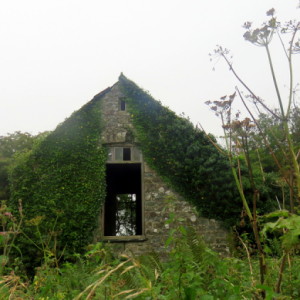Memory window
You could drive past many times before noticing that the thicket beside the tiny country road encloses a building (see extra), with high empty windows and a steeply pitched roof. Access is not for the faint-hearted: both barbed wire and barbed briars have to be negotiated and when you succeed in forcing your way through there is only a desolate ruin to be found, with mouldy haybales scattered over broken floor boards,
When I first came across it several years ago I thought it was a derelict chapel but then something triggered a memory and I recognised it as a tiny one-roomed school, very like the two-roomed version I myself attended between the ages of 7 and 9, elsewhere in Wales. There remained a fireplace to provide some winter warmth and I could see a row of nail holes where gloss-painted tongue-and-groove wainscoting would have deterred scratching or scribbling on the walls. Directly above it in my school our paintings and drawings would be pinned: simple pictures of hills, woods, fields, sheep and cows. The same high windows prevented pupils from the distraction of seeing hills, woods, fields, sheep and cows outside as they sat at their desks, eyes to be clamped firmly on the blackboard at all times.
And in the tiny entrance lobby, viewed through the window here, two rows of coats hooks remain, just like in my primary school, where big and little children hung their coats upon arrival.
This forgotten place, Ysgol Garn Ochor, stands in the middle of nowhere because it served a scattered rural community of remote farms and hamlets and must have been built in the optimum location for children who may have had to walk several miles each day to reach it. The school teacher appointed in 1912 herself relied upon a bike for her challenging daily commute, six steep miles from her home.
The school was opened in 1877 and closed in 1953. In its heyday the roll reached 70 pupils but attendance was always affected by illness and the demands of farm work. The curriculum included gardening and the school had an eminent alumnus in the agricultural botanist Professor Thomas James Jenkin(1885-1965) 'whose perennial rye grass S.23 contributed immeasurably to the work of re-seeding productive pastures from the 1930s onwards.'


Comments
Sign in or get an account to comment.


